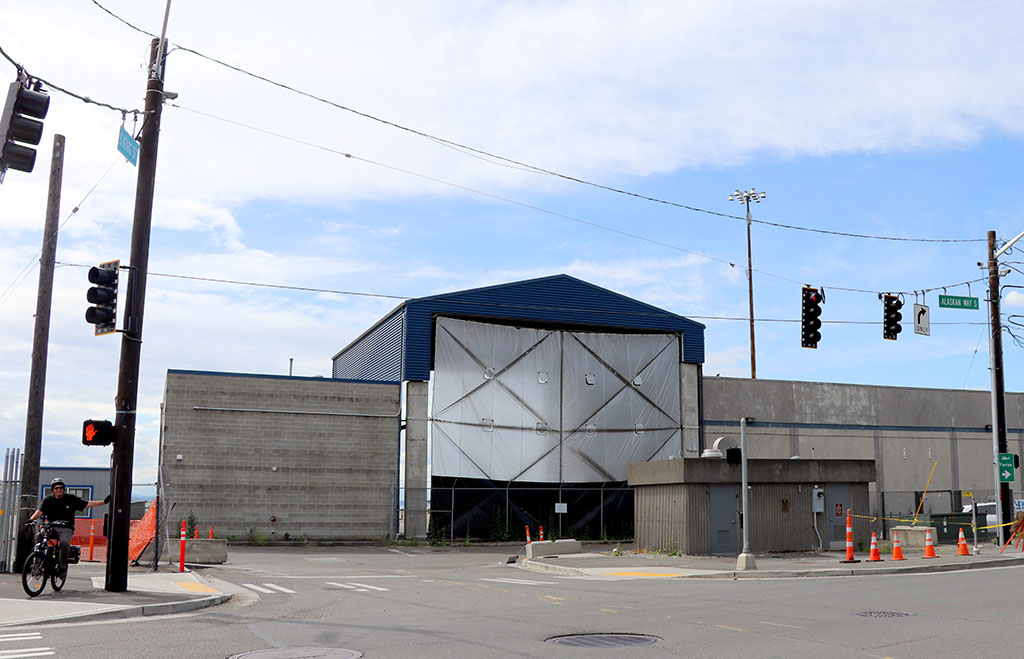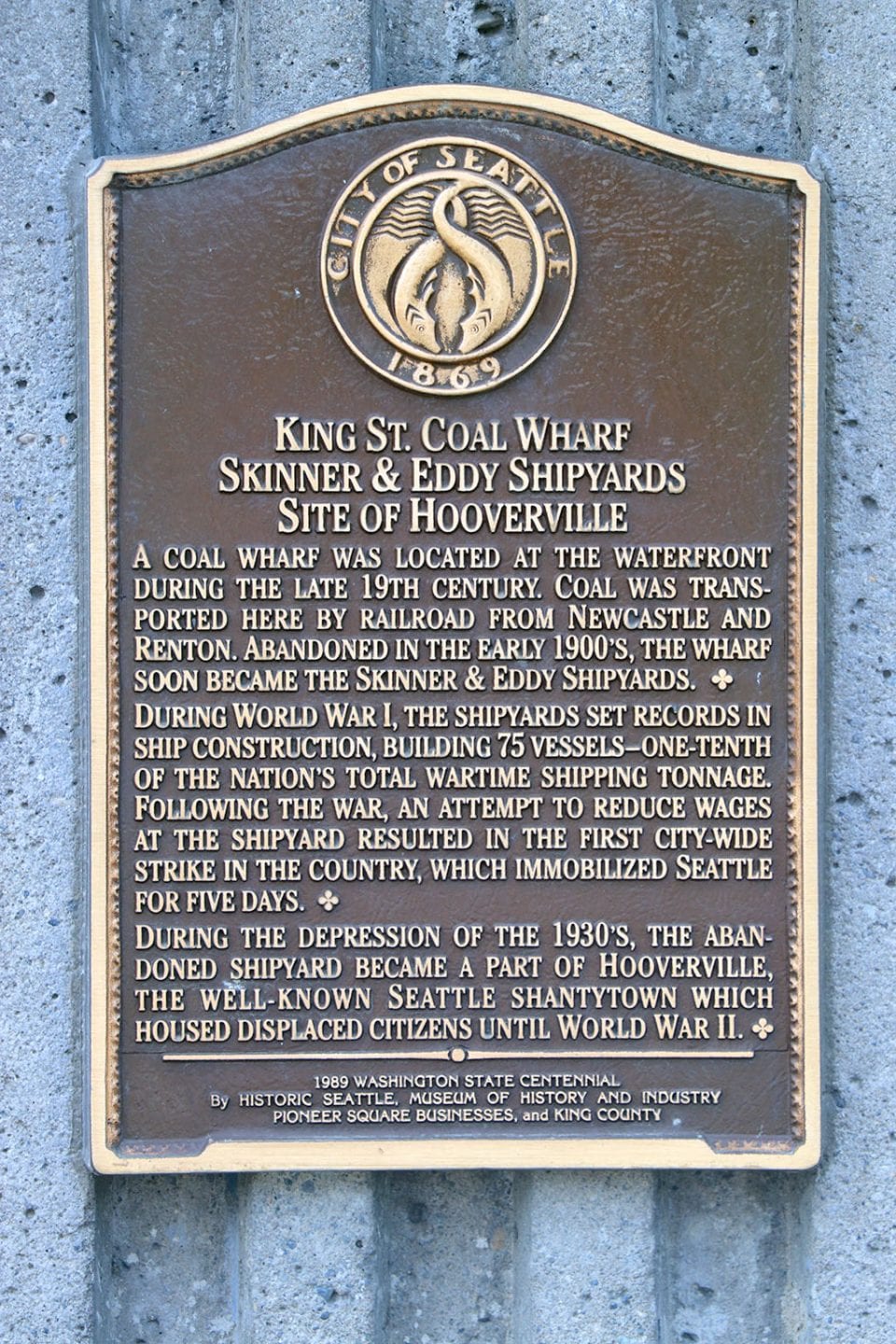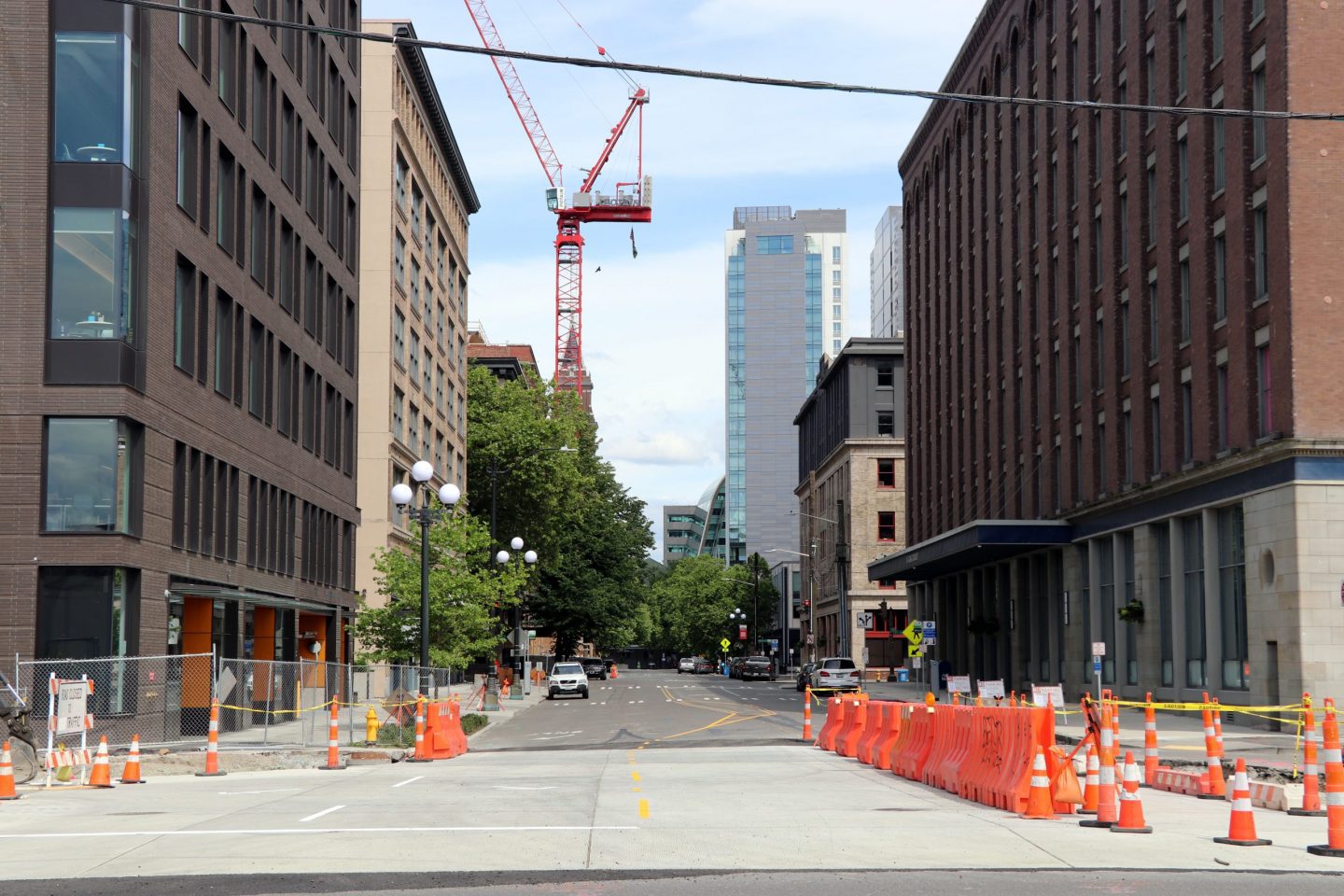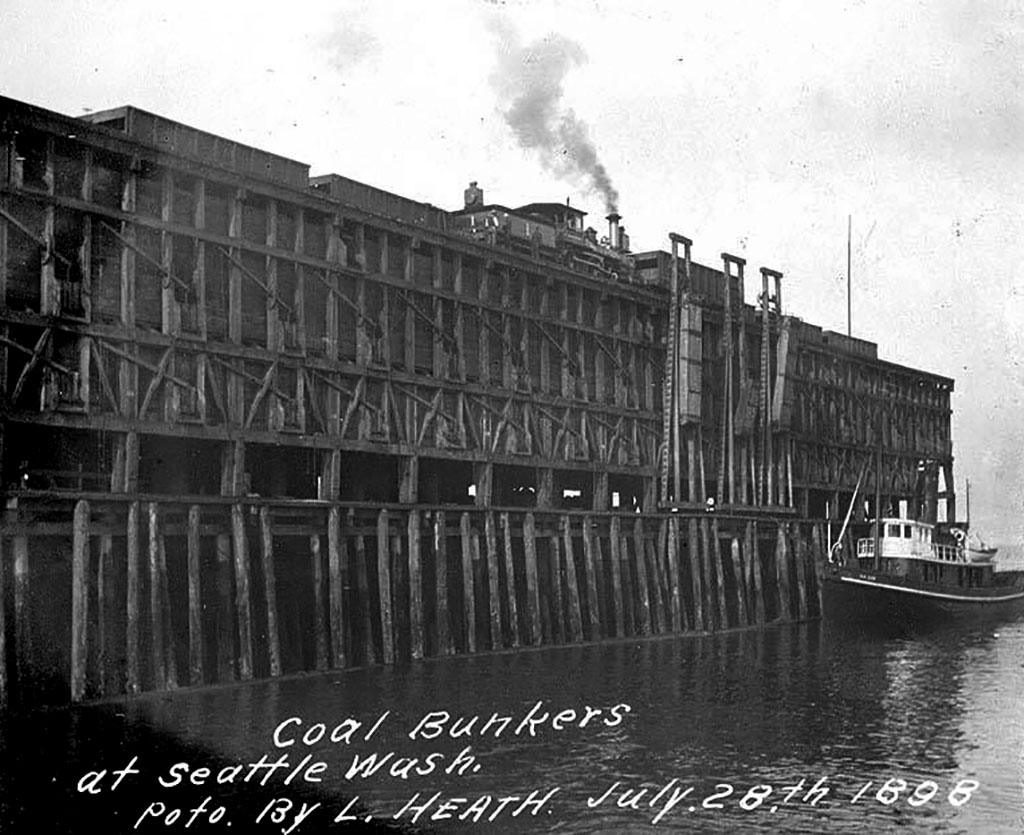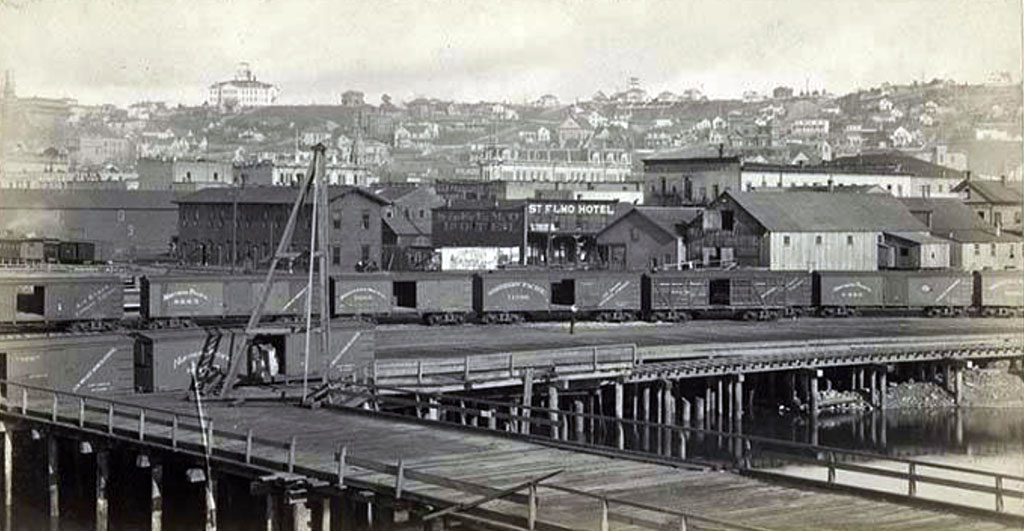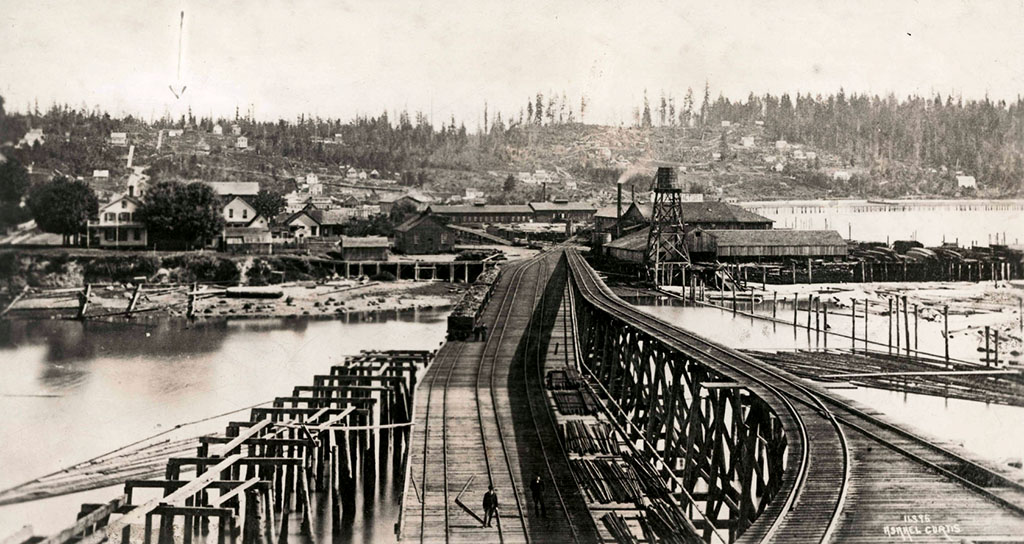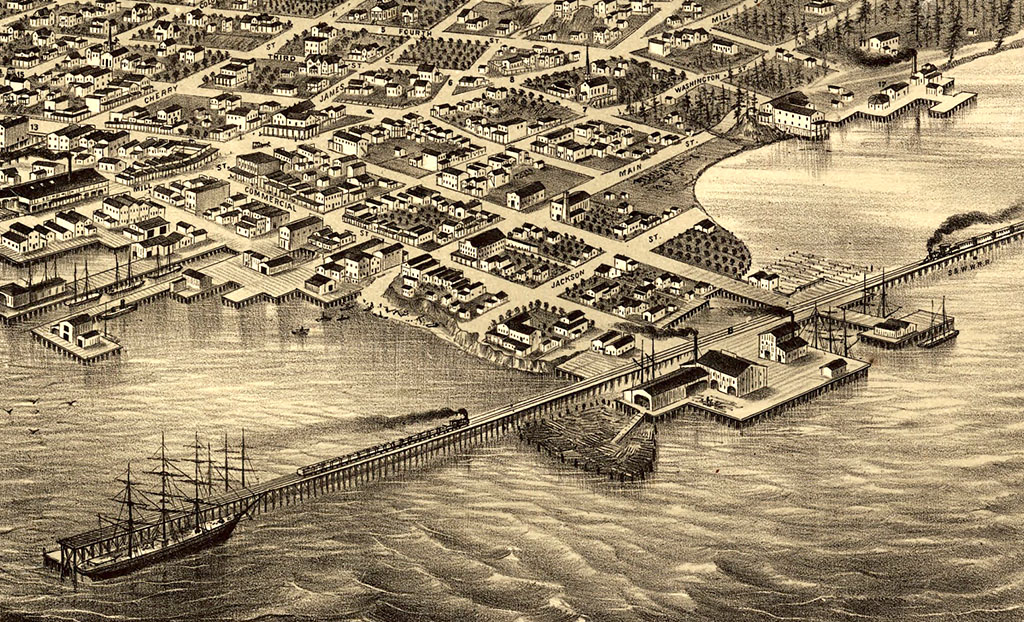Former Location of Coal Bunkers
Marker on west side of Alaskan Way at S King Street
Tour: Pioneer Square
-
Former location of Coal Bunkers
Marker on west side of Alaskan Way at S King Street
Marker on west side of Alaskan Way at S King Street
Most of the towns that started around Puget Sound in the last half of the nineteenth century depended on logging as their major source of income. Seattle was like this, too, until the 1870s, when coal supplanted wood. The coal came from the east side of Lake Washington, near the towns of Black Diamond, Carbondale, and Renton, and became central to the Seattle economy with the opening of Seattle’s second railroad, the Seattle & Walla Walla, in 1878. The line never made it to Walla Walla but did reach coal fields around Renton. It ended in Seattle at a two-tiered coal terminal, called a bunker, which facilitated loading at low and high tides. The abundance of coal and the ability to export it helped give Seattle a second important economic resource and made it unusual for the developing towns in Puget Sound.
At the time, the bunker on King Street was the southern limit of land in downtown Seattle. The area to the south was part of the Duwamish River tidelands in Elliott Bay, which during high tide was 10 to 15 feet deep in water. When the water ebbed out at low tide, it uncovered an open expanse of mud that stretched from roughly the base of Beacon Hill to West Seattle and south to what is now the Spokane Street Viaduct.
Non-Native people discovered coal in the 1850s. Initially, it had been barged down Lake Washington’s original outlet, the Black River, which flowed to the Duwamish River. Another early method involved transferring coal by tram to the shores of Lake Washington and transporting it by scow, but the hills between the lake and the Seattle waterfront made large-scale coal transport nearly impossible. This problem was solved in 1872, when the Seattle Coal & Transportation Company began operating Seattle’s first railroad, between south Lake Union and coal bunkers at the end of Pike Street.
Walk north along Alaskan Way two blocks to S Main Street.
